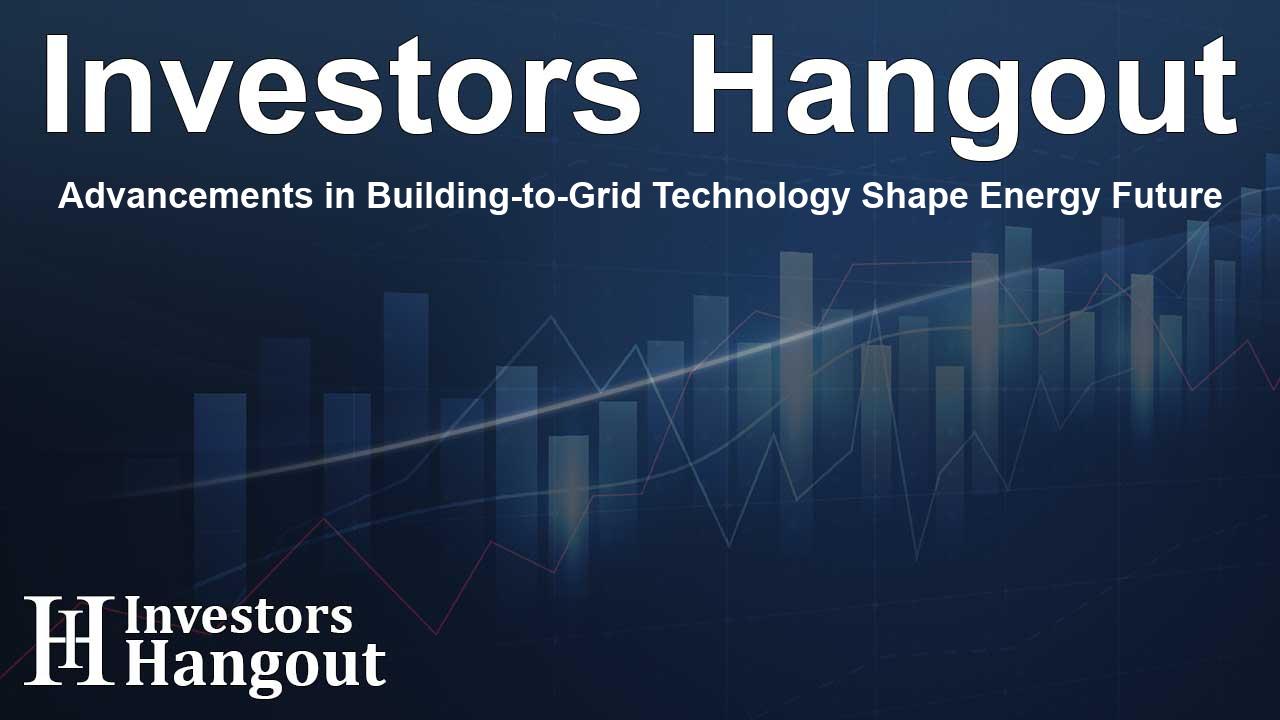Advancements in Building-to-Grid Technology Shape Energy Future

The Future of Building-to-Grid Technology
Across the globe, governments and organizations are recognizing the critical need to interconnect buildings with the energy grid to enhance efficiency, reliability, and the transition to renewable energy sources. Building-to-Grid (B2G) technology is essential for facilitating demand-side management strategies, allowing buildings to optimally adjust energy usage according to grid demands.
Market Value Growth
Recent reports indicate a significant expansion of the building-to-grid technology market, projected to grow from $54.9 billion to an impressive $147.8 billion by 2034, while maintaining a CAGR of 10.5%. This upward trajectory highlights a growing demand for solutions that integrate smart technology into infrastructure.
Rising Electricity Demand & Peak Load Management
The integration of B2G technology enables buildings to respond dynamically to grid signals, particularly during peak demand periods. For example, smart buildings can temporarily lower HVAC usage or utilize onsite energy storage rather than drawing excessively from the grid. This adaptability not only eases the burden on power providers but also minimizes operational costs. Statistics from the International Energy Agency show that global electricity consumption surged, underscoring the urgency for smart grid solutions.
Government Incentives & Regulatory Push
Government initiatives are pivotal in fostering the adoption of B2G technologies. With nations striving to meet climate targets, various incentives are being implemented to encourage energy-efficient practices and technologies. For instance, budget increases for renewable energy projects demonstrate a commitment to building a sustainable energy infrastructure.
Investment Trends in Energy Efficient Solutions
The demand for energy-efficient building solutions is rising, supported by substantial investments in green materials and technologies. Advanced Metering Infrastructure (AMI) systems, which incorporate smart meters and data management tools, allow buildings to become proactive players in the energy landscape. Real-time tracking of energy use and environmental conditions aids in optimizing operational efficiencies.
Accelerated Development in Asia-Pacific
The Asia-Pacific region is increasingly investing in B2G technologies as urbanization escalates alongside energy consumption. Initiatives such as virtual power plants and new partnerships in various countries exemplify the region's commitment to integrating sustainable practices into urban infrastructure.
Smart Cities and Energy Management
B2G technology is a fundamental component in the development of smart cities, where urban areas utilize technology to manage energy needs effectively. Enhanced communication between buildings and the grid facilitates better demand management, waste reduction, and the incorporation of renewable energy sources, ultimately creating more sustainable environments.
Challenges Facing B2G Technology
Despite the positive outlook, challenges remain for companies operating in the B2G sector. Recent tariff increases have created obstacles for commercial and municipal projects, resulting in a decline in new project initiations. Many companies, reliant on international supply chains for vital components, are experiencing increased costs and market pressures as they adapt to these regulatory changes.
Industry Expert Insights
To stay ahead, companies must leverage the insights of industry experts who can guide them through the complexities of these evolving markets. By strategically planning and innovating, businesses can embrace the benefits of B2G technology and ensure their solutions meet both consumer and regulatory expectations.
Frequently Asked Questions
What is Building-to-Grid technology?
Building-to-Grid technology allows buildings to interact with the energy grid to optimize energy use and support demand response strategies.
What is the projected market growth for B2G technology?
The B2G technology market is expected to grow from $54.9 billion to $147.8 billion by 2034.
How do governments support B2G technology adoption?
Governments implement incentives and regulatory frameworks promoting smarter energy systems and funding for green technologies.
What challenges does the B2G market face?
Challenges include tariff increases affecting project viability and reliance on international supply chains for components.
What role do smart cities play in B2G technology?
Smart cities leverage B2G technology to manage energy more effectively, reduce waste, and promote sustainability in urban environments.
About The Author
Contact Ryan Hughes privately here. Or send an email with ATTN: Ryan Hughes as the subject to contact@investorshangout.com.
About Investors Hangout
Investors Hangout is a leading online stock forum for financial discussion and learning, offering a wide range of free tools and resources. It draws in traders of all levels, who exchange market knowledge, investigate trading tactics, and keep an eye on industry developments in real time. Featuring financial articles, stock message boards, quotes, charts, company profiles, and live news updates. Through cooperative learning and a wealth of informational resources, it helps users from novices creating their first portfolios to experts honing their techniques. Join Investors Hangout today: https://investorshangout.com/
The content of this article is based on factual, publicly available information and does not represent legal, financial, or investment advice. Investors Hangout does not offer financial advice, and the author is not a licensed financial advisor. Consult a qualified advisor before making any financial or investment decisions based on this article. This article should not be considered advice to purchase, sell, or hold any securities or other investments. If any of the material provided here is inaccurate, please contact us for corrections.
